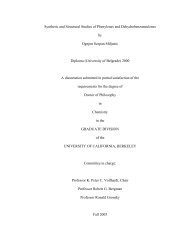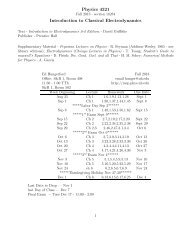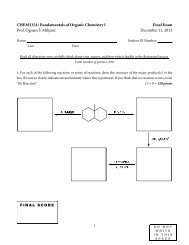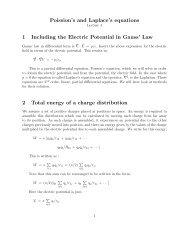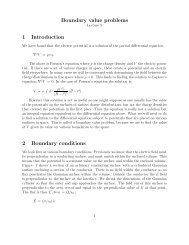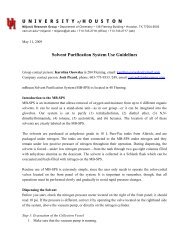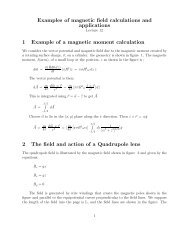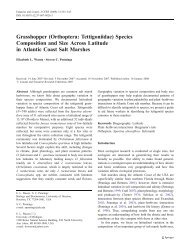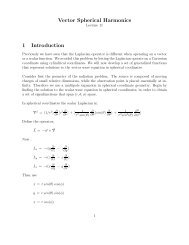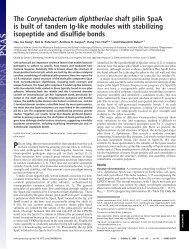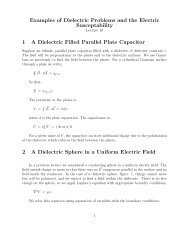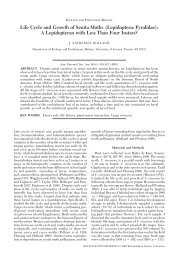Scattering 1 Classical scattering of a charged particle (Rutherford ...
Scattering 1 Classical scattering of a charged particle (Rutherford ...
Scattering 1 Classical scattering of a charged particle (Rutherford ...
You also want an ePaper? Increase the reach of your titles
YUMPU automatically turns print PDFs into web optimized ePapers that Google loves.
oth energy and momentum, write;⃗p I = ⃗p F + ⃗p γE I = E F + E γWhen combining the equationsM 2 γ = E 2 γ − p 2 γ = 2[M 2 + p I p F cos(θ) − E I E F ]In the above M is the mass <strong>of</strong> the <strong>particle</strong> and θ is the angle between the incident andoutgoing momentum. Now M 2 γ < 0 so that M γ is imaginary. However, in some cases it isuseful to think that this photon has some <strong>of</strong> the the properties <strong>of</strong> a real photon. Indeed inQM such a virtual <strong>particle</strong> can live within the uncertainty relation ∆E ∆t ≈ . For laternotation we let this photon have energy ω = E I − E F and momentum ⃗q = ⃗ P I − ⃗p F . ThenM 2 γ = ω2 − q 2 < 014 <strong>Scattering</strong> <strong>of</strong> virtual quantaThis technique is an approximation to the interaction <strong>of</strong> <strong>charged</strong> <strong>particle</strong>s, by viewing thefield as a collection <strong>of</strong> virtual photons. The approximation works for photons that are almost“on the mass shell”, ie virtual photons that have mass nearly zero.Consider the <strong>scattering</strong> <strong>of</strong> a <strong>charged</strong> <strong>particle</strong> from another charge system. The figure 12 isa schematic <strong>of</strong> the model to be described. Indeed the figure illustrates how bremsstrahlungcould be described as the scatering <strong>of</strong> a virtual photon into one <strong>of</strong> real mass. Generally wewould have a light <strong>particle</strong> <strong>scattering</strong> from a heavier one, but we use a frame in which theheavier mass is in motion and the lighter mass is at rest so that the motion <strong>of</strong> the heaviermass can be assumed to move with constant velocity during the collision. The lighter<strong>particle</strong> recoils and emitts radiation. The relativistic factor for the movement <strong>of</strong> the chargeQ is γ ≫ 1. Now if γ ≫ 1 the E and B fields are almost transverse. The fields at point P are;E 1 = Q4πǫE 2 = Q4πǫγvt(b 2 + (γvt) 2 ) 3/2γb(b 2 + (γvt) 2 ) 3/2⃗B = ⃗ V × ⃗ EThe equation for the ⃗ B is due to the fact there is no magnetic field in the rest frame <strong>of</strong> Q.The E field is just the static field <strong>of</strong> a charge Q a distance r ′ away from the point, Q. Apply21





